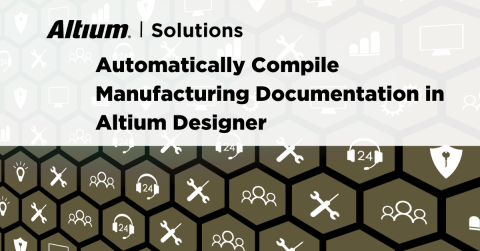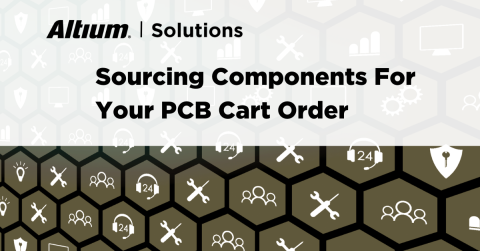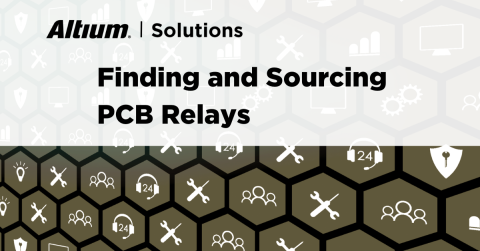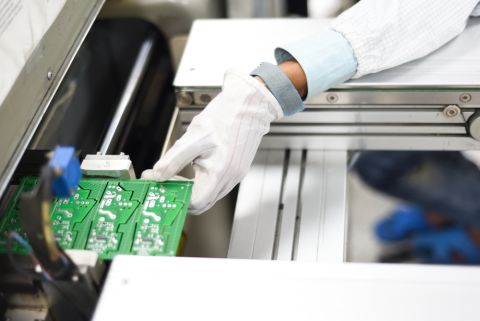Understanding the PCB Supply Chain
Global supply chains are an intricate web of processes and stakeholders involved in the design, manufacture, assembly, and distribution of products and services—the Printed Circuit Board (PCB) supply chain is no different, if not a little more complex. Though they’re seldom discussed, PCBs are essential components found in almost every electronic device, and their production is a critical aspect of the electronics industry. Understanding the PCB supply chain is crucial for not only companies that need to manage risk, optimize costs, and ensure the timely delivery of products but also consumers, whose daily life is often, on a foundational level, powered by this innovative technology.
In this article, I’ll delve into the PCB supply chain, its various stages, key stakeholders, the industry’s challenges, and considerations and strategies for effective PCB supply chain management.
PCB Design
The first step in the PCB supply chain is design, where engineers create a blueprint for the PCB based on the functional requirements of the electronic device. When designing a PCB for a smartphone, for example, engineers need to consider the small size of the device, the need for a long battery life, and the required processing power, which involves determining the size, shape, and layout of the board, as well as the placement of individual components and traces. Computer-Aided Design (CAD) software, like Altium Designer, can help an engineer to map out, create, and simulate the schematic for these designs. Once the idea has come to fruition, the team can send the final design to a PCB manufacturer for production.
Key stakeholders:
- Electronics Engineers.
- Mechanical Engineers.
- PCB Designers.
- CAD software providers.
Raw Materials Sourcing
Once designed, PCB manufacturers need to source crucial raw materials such as copper-clad laminates, copper foils, prepregs, and resins. Copper-clad laminates provide a rigid structure, while copper foils create conductive ‘tracks’ for the circuit layout. Prepregs, a type of fiberglass imbued with resin, serve as a bonding agent for multilayer PCBs, providing insulation, while different resins are used for encapsulation, enhancing the PCB's durability.
Procurement teams acquire these materials from a global network of suppliers, with major production centers in Asia, Europe, and North America, each offering distinct advantages in resources, technology, and logistics. For the PCB industry, maintaining a reliable and cost-effective supply of these raw materials is crucial. It requires robust supply chain management and strategic partnerships to avoid potential production disruptions, cost escalation, and compromised quality.
Key stakeholders:
- Raw material suppliers.
- Mines.
- Refineries.
PCB Fabrication
PCB fabrication involves the transformation of raw materials into the desired board shape and the creation of conductive patterns. This process includes multiple steps, such as drilling, etching, electroplating, and lamination. The final product is a bare PCB, which is then inspected for quality and compliance with design specifications. The fabricated PCBs are sent to an assembly facility for the next stage in the process.
Key stakeholders:
- PCB manufacturers.
- Fabrication equipment providers.
- Quality control.
- Inspection specialists.
PCB Assembly
Following fabrication, PCB assembly is the process of mounting electronic components onto a printed circuit board to create a functional device. The process commences with the application of solder paste, a mixture of small solder particles and flux, to the specific areas of the PCB where the components will be placed. Components are then precisely placed onto the PCB using automated pick-and-place machines.
Following component placement, soldering is performed to permanently affix the components onto the PCB. This can be achieved through surface-mount technology (SMT) or through-hole technology.
- Surface-mount technology involves mounting components directly onto the PCB surface and passing the board through a reflow oven to melt the solder paste, forming a mechanical and electrical bond.
- Through-hole technology involves inserting component leads into pre-drilled holes on the PCB, with soldering done on the opposite side. After soldering, the assembled PCBs undergo inspection and testing to ensure functionality.
Key stakeholders:
- Assembly Manufacturing Engineer (AME).
- Advanced Manufacturing Engineer.
Integration into Electronic Products
After being assembled, the printed circuit boards (PCBs) are prepared for integration into an array of electronic products, from smartphones and computers to home appliances and vehicles. This critical phase in the manufacturing process involves transforming the formerly independent PCB into an operational component of a larger system. The integration process involves meticulously linking the PCBs with other components constituting the final product, such as power sources, including batteries or adapters, displays like LED screens or LCD monitors, and input devices such as keyboards or touchscreens. Depending on the particular specifications of the electronic device, other components like cameras, speakers, and sensors are also connected to the PCBs.
Additionally, the PCBs are housed within structural enclosures or casings designed to shield the electronics from physical damage and environmental hazards like dust, moisture, or excessive heat. This could involve fastening the PCB into a plastic or metal frame or inserting it into specially designed grooves for secure holding. In some cases, a single device might contain multiple PCBs, each dedicated to different tasks, such as in a computer where one PCB might be a motherboard accommodating the CPU and memory, and another could be a graphics card specifically designed for intensive graphics processing tasks. Following the integration of the PCBs and the full assembly of the device, another round of testing is conducted to ensure the seamless operation of all components. Only after this verification is the product ready for packaging and shipment to consumers or retailers.
Key stakeholders:
- Electronics companies.
- Hardware engineers.
- Suppliers.
PCB Testing and Regulatory Standards Compliance
The final stages of the PCB manufacturing process are critical in ensuring that the product is functional, reliable, and compliant with all necessary regulations. This involves rigorous testing and quality assurance checks. Testing methods may include:
- Visual inspection.
- Automated optical inspection (AOI).
- In-circuit tests (ICT).
- Functional tests to verify that each PCB functions as intended.
I won’t detail the aim of each testing method, but an ICT, for example, can check for capacitance, opens, shorts, resistance, and other basic quantities to catch manufacturing defects.
To ensure compliance with regulatory standards within the nations where they will be used, the PCBs may undergo specific tests like Electromagnetic Compatibility (EMC) testing or environmental stress tests, which can include temperature, humidity, or vibration assessments. Only after successfully passing rigorous testing and inspections set by bodies such as the United States Federal Communication Commission (FCC) or the European Union will the PCB be deemed ready for shipping and safe for use in electronic devices.
Key stakeholders:
- Environmental and public health advocacy groups.
- Manufacturers.
- Regulatory bodies.
- Quality assurance engineers and technicians.
Challenges in the PCB Supply Chain
The journey to complete a printed circuit board is an elaborate one, and, as you might expect, the supply chain faces numerous challenges, including:
- Geopolitical and Trade Tensions: Political instability, conflict, and trade disputes can disrupt the supply of raw materials, components, or finished products, leading to increased costs and delays. In light of the ongoing upheaval and in an attempt to mitigate further supply chain disruptions, Western nations and trade blocs are looking to policymakers.
- Congress enacted the CHIPS (Creating Helpful Incentives to Product Semiconductors) and Science Act of 2022, which offers $52.7 billion in federal subsidies to support the development and advancement of semiconductor manufacturing infrastructure in the United States.
- The European Parliament and Council of Ministers voted to put into law the Commission’s proposal for the €6.2 billion European Chips Act, which will see member states of the European Union invest heavily in semiconductor manufacturing infrastructure and attempt to strengthen Europe’s somewhat waning technological leadership on a global scale.
- Environmental Regulations: Stricter environmental regulations and sustainability concerns impact the sourcing of raw materials and manufacturing processes. Compliance with these regulations can add complexity and cost to the PCB supply chain.
- Technological Advancements: Rapid technological advancements require constant innovation and adaptation within the PCB supply chain. This includes staying up-to-date with new materials, manufacturing techniques, and design trends.
- Supply and Demand Fluctuations: Changes in consumer demand and global economic conditions can lead to imbalances in supply and demand, resulting in price volatility and potential shortages of raw materials or components. A prime example of this is the recent semiconductor shortage, which saw the availability of innovative chips plummet while demand continued to soar.
- Quality Assurance and Counterfeit Components: Ensuring the quality and authenticity of components is a significant challenge for the PCB supply chain. Counterfeit parts can result in performance issues, product failures, and damaged reputations.
- Intellectual Property Protection: Safeguarding intellectual property (IP) is crucial in the PCB supply chain, as unauthorized copying or reverse-engineering can result in lost revenue and market share.
Strategies for Effective PCB Supply Chain Management
To navigate these challenges, companies can adopt several strategies:
- Supplier Diversification: Sourcing raw materials and components from multiple suppliers across different geographical locations can help mitigate the risks associated with geopolitical tensions, trade disputes, and supply shortages; a diverse mix of bilateral trade agreements and nearshore, offshore, and reshore operations is proving most effective in the current supply chain climate.
- Compliance Management: Implementing robust systems for monitoring and ensuring compliance with environmental regulations, quality standards, and IP protection is essential in minimizing risks and potential penalties.
- Adoption of New Technologies: Given that growth tends to come through innovation, and the PCB industry has a projected worth of $90.1 billion by 2030, the creation of more advanced components is bound to be exponential; now more than ever, it’s crucial that companies invest in the latest technologies and manufacturing processes to improve efficiency, reduce costs, and help companies stay competitive in a rapidly evolving market.
- Demand Forecasting and Inventory Management: Accurate demand forecasting and efficient inventory management can help companies anticipate and adapt to changes in supply and demand, reducing the risks of stockouts or excess inventory.
- Collaboration and Information Sharing: Establishing strong relationships with suppliers, customers, and other stakeholders in the PCB supply chain can facilitate better communication and information sharing, enabling more effective decision-making and faster response to market changes. For companies interested in enhancing the flow of information between supply chain stakeholders, the implementation of a private blockchain system might prove beneficial, as it increases the integration of financial and logistics services, which enables greater data collaboration.
Ultimately, the PCB supply chain is a sophisticated network that plays an absolutely pivotal role in the electronics industry. A deep understanding of its various stages, key stakeholders, and challenges is essential for companies looking to optimize their supply chain management, reduce risks, and ensure the timely delivery of high-quality products.
With those high-quality products in mind, if you’re looking to improve the quality of components flowing through your company’s PCB supply chain or you’re an electronics component manufacturer or distributor who’s looking to sell your products, take a look at Octopart for Business, which empowers you—through enhanced data analytics, the Nexar API, and marketing solutions—to connect with, sell to, and buy from millions of engaged users through Octopart’s world-leading electronic parts search engine.









